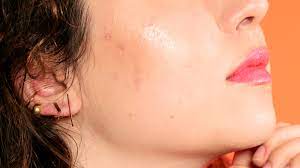Cystic Acne On Cheeks

Acne is a common skin condition that cystic acne on cheeks can affect people of all ages. However, cystic acne is a more severe form of acne that is characterized by large, painful pimples. Cystic acne is often found on the cheeks, and can be very difficult to treat. There are a number of factors that can contribute to the development of cystic acne, including hormones, genetics, and skincare habits. However, the good news is that there are a number of treatments available that can help improve the appearance of your skin. In this blog post, we will explore the causes of cystic acne and provide some tips on how to treat it effectively.
If you’re one of the millions of people suffering from acne, you may be all too familiar with the frustration that comes with trying to get rid of it. Acne is a common skin condition that can affect people of all ages, but cystic acne is a more severe form of the condition, characterized by large, painful pimples. Cystic acne is often found on the cheeks, and can be very difficult to treat. There are a number of factors that can contribute to the development of cystic acne, including hormones, genetics, and skincare habits. However, the good news is that there are a number of treatments available that can help improve the appearance of your skin. In this blog post, we will explore the causes of cystic acne and provide some tips on how to treat it effectively.
Causes of cystic acne
There are a number of potential causes of cystic acne, including hormonal imbalances, certain medications, and genetics. Hormonal imbalances can cause an increase in sebum production, which can lead to clogged pores and the formation of acne blemishes. Certain medications, such as corticosteroids or Androgen blockers, can also trigger or worsen cystic acne breakouts. And finally, genetics may play a role, as some people are simply more prone to developing this type of acne than others..
How to get rid of cystic acne
If you’re struggling with cystic acne, you’re not alone. This common skin condition can be painful and frustrating, but there are ways to manage it.
One of the most important things you can do is keep your skin clean. Wash your face twice a day with a gentle cleanser and warm water. Avoid scrubbing or rubbing your skin too harshly, as this can make acne worse.
In addition to cleansing, you’ll also want to use an acne-fighting topical treatment. Look for one that contains benzoyl peroxide or salicylic acid, and apply it to the affected areas. Be sure to follow the directions on the label carefully, as these treatments can be drying and irritating if used incorrectly.
Finally, take care of yourself from the inside out by eating a healthy diet and getting plenty of rest. These lifestyle choices won’t cure acne, but they can help prevent new breakouts from happening.
Home remedies for cystic acne
Cystic acne is a type of acne that is characterized by deep, inflamed breakouts on the skin. Cystic acne can be painful and difficult to treat, but there are some home remedies that can help.
One home remedy for treating cystic acne is to apply a warm compress to the affected area. This can help to reduce inflammation and pain. Another home remedy is to mix equal parts baking soda and water and apply it to the skin as a spot treatment. This can help to dry out the pimple and reduce swelling.
If you are suffering from cystic acne, it is important to consult with a dermatologist or other skincare professional before trying any home remedies.
Over the counter treatments for cystic acne
There are several over-the-counter treatments for cystic acne. These include:
Benzoyl peroxide: This is an antibacterial agent that helps to kill the bacteria that cause acne. It is available in gels, creams and lotions.
Salicylic acid: This helps to break down the pimples and blackheads. It is available in gels, creams and lotions.
Retinoids: These are vitamin A derivatives that help to unplug the hair follicles and prevent the formation of pimples. They are available in gels, creams and lotions.
Prescription treatments for cystic acne
There are many prescription treatments for cystic acne. The most common are retinoids, antibiotics, and birth control pills.
Retinoids are a class of drugs that are derived from vitamin A. They work by decreasing the size and activity of the oil glands in the skin, which can help to reduce the production of sebum. Common retinoids used to treat cystic acne include tretinoin, adapalene, and isotretinoin.
Antibiotics are often used to treat bacterial infections, but they can also be effective in treating acne by reducing the inflammation associated with it. Common antibiotics used to treat cystic acne include tetracycline, erythromycin, and minocycline.
Birth control pills can also be effective in treating cystic acne by regulating hormones. However, they should only be used under the supervision of a healthcare provider.
Conclusion
There’s no denying that cystic acne can be a real pain – both literally and figuratively. But with the right treatment, it is possible to get your skin cleared up and looking great again. We hope this article has given you some helpful tips on how to deal with cystic acne on your cheeks. Do you have any other tips that have worked for you? Share them with us in the comments below!







